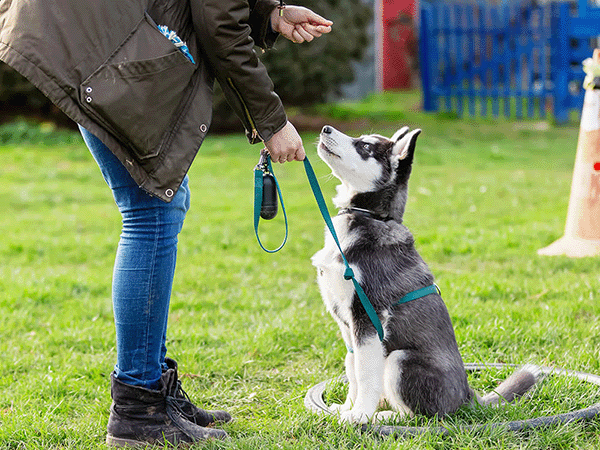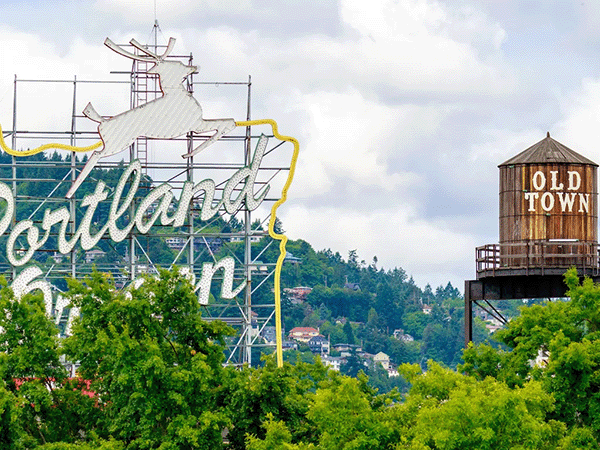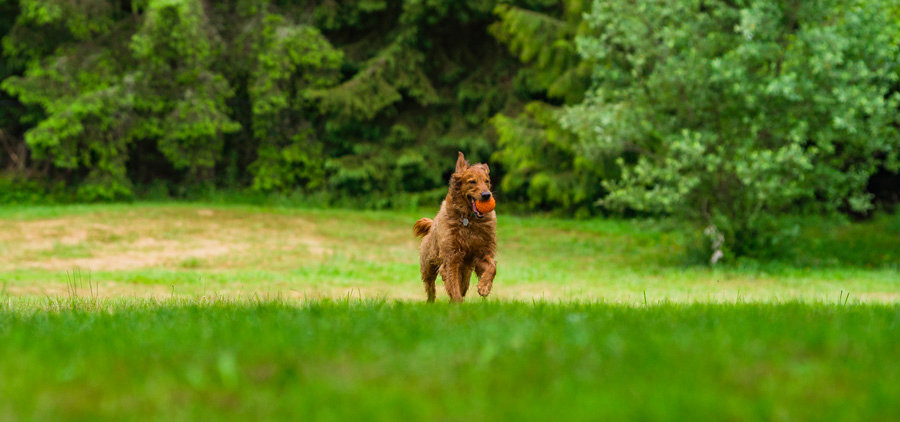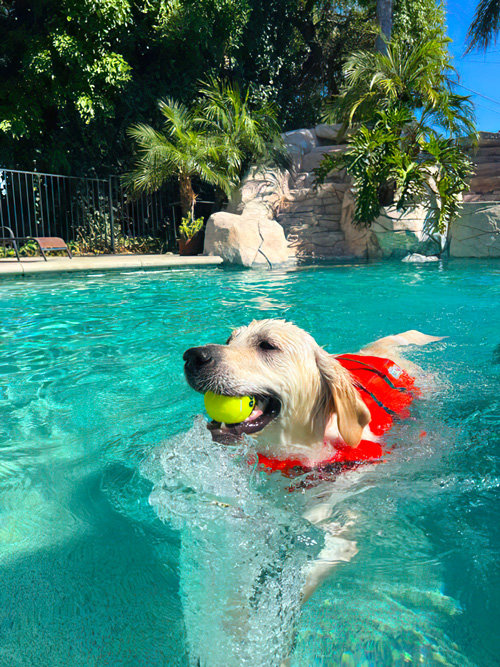Get to Know the Jack Russell: Unusual Facts & Owner Truths

Thinking about adding a Jack Russell Terrier to your family? These small but mighty dogs pack a ton of personality. From their playful energy to their clever antics, there's a lot to love about a Jack Russell. But before you jump in, it's smart to learn about their unique needs. We asked nearly 100 Jack Russell owners on Sniffspot for their best advice. This guide covers everything from training and exercise to health and the everyday joys (and challenges!) of living with a Jack Russell. Get ready to build an amazing bond with your new energetic companion.
In this post, we share insights from nearly 100 Sniffspot Jack Russell Terrier owners, offering practical advice for new and prospective Jack Russell Terrier owners. Whether you’re considering adopting or rescuing a Jack Russell Terrier or already have one, you’ll find valuable tips on how to care for and enjoy life with an intelligent Jack Russell Terrier.
As Sniffspot user Shilean says, “She is always ready to do what her breed does (hunting little outdoor animals like birds or squirrels).”
Source: Sniffspot Community Breed Survey 2024
Jack Russell Terrier: At a Glance
- Breed Type: Terrier
- Size: Small
- Life Expectancy: 13 to 16 years
- Healthy Weight Range: 13 to 17 pounds
- Height Range: 10 to 15 inches
- Temperament: Intelligent, Affectionate, Energetic
- Coat Type: Short, smooth or rough
- Color: White with black, tan, or brown markings
Getting to Know the Jack Russell Terrier
According to nearly 10,000 Sniffspot community users who shared real-world data about their Jack Russell Terrier, we learned that these dogs are intelligent and affectionate. The Jack Russell Terrier is also known to be very friendly and social with children and very friendly with other pets.
When living with a JRT, 78% of our owners indicated that a large house with a fenced yard is ideal. Additionally, 39% of owners found that an apartment or condominium with regular walks is also acceptable. This dog is moderately trainable, often benefiting from a professional trainer, and owners say that the Jack Russell Terrier learns best with positive reinforcement, consistent routines, and socialization.
In terms of exercise, 42% of Sniffspot owners say their Jack Russell Terrier benefits from moderate exercise every day, including between 1-2 hours of activity each day, such as walks and active play sessions. The Sniffspot JRT community would not recommend this dog for first-time owners.
Key Takeaways
- Jack Russells need lots of activity: Plan for 1-2 hours of exercise and mental stimulation daily. A fenced yard is great, but apartment living is possible with dedicated effort, including regular walks and engaging activities. Sniffspot can help provide enriching outings.
- Training is a must: Jack Russells are smart but have a mind of their own. Positive reinforcement, consistent routines, and early socialization are key for a well-behaved companion.
- Know what you're getting into: Jack Russells are a big commitment. Research breeders or consider adoption. Understand their unique needs, including potential health issues and a strong prey drive, before bringing one home.
Breed History and Standards: Unraveling the Jack Russell Lineage
The Jack Russell Terrier, a small but mighty breed, traces its roots back to 19th-century England. Developed by Reverend John "Jack" Russell, these dogs were initially bred for the thrilling pursuit of fox hunting.
Their compact size and tenacious spirit made them ideal for flushing out foxes from their dens. This working heritage is deeply ingrained in their DNA, shaping their energetic and determined personalities.
The Jack Russell, Parson Russell, and Russell Terrier: What's the Difference?
It's easy to get confused by the different names associated with this breed. While the Jack Russell Terrier, Parson Russell Terrier, and Russell Terrier share a common ancestor, they are recognized as distinct breeds by various kennel clubs. The Jack Russell Terrier is generally smaller than the Parson Russell Terrier, which tends to have longer legs. The Russell Terrier, recognized by the American Kennel Club (AKC), is another variation with its own specific standard. The Jack Russell Terrier Club of America (JRTCA) maintains the original breed standard, emphasizing the dog's working heritage and diversity in size and appearance.
The Breed Standard Debate
The Jack Russell Terrier's breed standard has been a subject of debate among kennel clubs, contributing to the development of related breeds like the Parson Russell Terrier and Russell Terrier. The JRTCA champions preserving the Jack Russell's original working traits and the natural variations in size and appearance within the breed. This focus on functionality and diversity sets the JRTCA standard apart from the more specific standards of other kennel clubs. For those interested in training, check out our resources on top dog trainers.
Jack Russell Terrier vs. Parson Russell Terrier vs Russell Terrier
The JRTCA embraces a broader range of sizes and appearances in Jack Russell Terriers compared to the AKC standards for the Parson Russell Terrier and Russell Terrier. This inclusivity reflects the breed's history and working origins. Sadly, many Jack Russells end up in shelters because owners underestimate their high-energy needs. If you're considering adding a Jack Russell to your family, be prepared to provide plenty of exercise and mental stimulation. A great way to do this is with regular visits to a Sniffspot, where your energetic companion can run, play, and explore in a safe and enriching environment. You can even find dog water parks on Sniffspot!
Origins of the Jack Russell Terrier
The Jack Russell Terrier originated in England in the early 19th century, developed by Reverend John Russell, an avid fox hunter, to create a small, energetic dog capable of flushing foxes from their dens. Bred for its tenacity, speed, and agility, the Jack Russell became an essential companion for hunters, excelling at chasing and cornering prey.
This breed is known for its boundless energy, intelligence, and strong prey drive, making it ideal for hunting small game. Over the years, it has evolved into a popular companion dog, loved for its spirited nature and strong personality, though its hunting instincts still shine through today.
Jack Russell Terrier Temperament & Traits
- Temperament: Intelligent, Affectionate, Energetic
- Energy Level: High
- Trainability: Moderately trainable – Learns commands with consistent training and practice.
- Grooming needs: Low maintenance – Requires minimal grooming, such as occasional brushing and baths.
- Good with Kids: Very friendly and social with children
- Good with Other Pets: Very friendly with other pets
Understanding the Jack Russell's Strong-Willed Nature
Jack Russells are intelligent, playful, and strong-willed. This combination makes training essential, but also potentially challenging. They are fiercely loyal to their owners but can be aggressive towards other dogs, especially if their hunting instincts are triggered. Early socialization is key to helping your Jack Russell learn to interact appropriately with other canines. Expose them to a variety of dogs, people, and environments from a young age, preferably during puppyhood. Finding a qualified dog trainer can be invaluable in establishing a positive training foundation and addressing any behavioral issues early on.
While Jack Russells can be affectionate and playful with children, their energetic nature and tendency to nip when excited can sometimes be overwhelming for younger kids. Supervise interactions closely and teach children how to interact respectfully with the dog. Remember that every dog is an individual, and some Jack Russells may be more tolerant of children than others. Consider your family dynamic and the individual dog's personality when deciding if this breed is the right fit for you.
Potential for Aggression and Wariness
While generally friendly with their families, a Jack Russell’s hunting instincts mean constant supervision is necessary when they are with children. Their high prey drive and strong chase instinct require careful supervision and training, especially around young children and small animals. This doesn't mean Jack Russells can't be part of a family with kids or other pets, but it does require proactive management. Secure, fenced areas are essential, both at home and when visiting places like Sniffspot dog parks. This will prevent your Jack Russell from taking off after squirrels, rabbits, or even a passing jogger.
Introducing a Jack Russell to other pets should be done gradually and with careful supervision. Early socialization plays a crucial role in minimizing potential conflicts. Be mindful that their prey drive can extend to smaller pets like cats or hamsters, so even if they've been raised together, it's wise to supervise their interactions.
The "One-Person Dog" Tendency
Jack Russells are often described as "one-person dogs," meaning they can form an exceptionally strong bond with one individual in the household. While they'll still be affectionate with other family members, they may be more reserved or protective around strangers. This close bond can be incredibly rewarding for the chosen person, but it's important to ensure the dog still receives socialization and has positive interactions with others. This will prevent them from becoming overly possessive or anxious when separated from their primary person.
If you have a multi-person household, ensure everyone participates in training and playtime to build a positive relationship with the dog. Even if the Jack Russell clearly favors one person, they can still learn to enjoy the company of everyone in the family.
Managing the Jack Russell's High Prey Drive
That strong prey drive we've been talking about? It's not something you can train out of a Jack Russell; it's ingrained in their DNA. However, you can manage it effectively with consistent training and mental stimulation. A tired Jack Russell is a well-behaved Jack Russell. Provide plenty of opportunities for exercise and enrichment, such as puzzle toys, agility training, and engaging play sessions. A visit to a safe, enclosed Sniffspot can be a great way to let your Jack Russell burn off energy and explore in a controlled environment.
Mental stimulation is just as important as physical exercise for this intelligent breed. Teach them tricks, play games that involve problem-solving, and consider dog sports like agility or flyball. Keeping their minds engaged will help prevent behavioral problems like excessive barking, digging, and hyperactivity, which can arise from boredom and pent-up energy. Remember, a stimulated Jack Russell is a happy Jack Russell.
Life With a Jack Russell: What to Expect
As a Jack Russell Terrier owner, it’s important to know the best dog breed tips and what to expect from current Jack Russell Terrier owners.

Source: Sniffspot Community Breed Research 2024
Grooming Your Jack Russell
Jack Russell Terrier dogs require low-maintenance grooming. This means Jack Russell Terrier owners should expect minimal grooming, like occasional brushing and baths. Jack Russell Terrier dogs have a short, smooth or rough coat, which is ideal for protection from harsh elements while hunting. Their coat is considered to shed moderately.
To keep your Jack Russell Terrier’s coat healthy and up to breed standards, brush weekly to manage shedding. Of the coat types for breeds in the Terrier group, the grooming needs for Jack Russell Terriers are considered to be low maintenance.
Grooming Needs for Different Coat Types
Jack Russell Terriers typically sport one of three coat types: smooth, broken, or rough (sometimes called wiry). While all are relatively low maintenance, there are subtle differences in their grooming needs. The smooth coat is the shortest and easiest to care for, requiring only an occasional brush to remove loose hair. A weekly brush is usually sufficient. The broken coat falls somewhere in between, with slightly longer hair that may benefit from more frequent brushing, perhaps two or three times a week.
The rough coat, being the longest, requires the most attention. These dogs need weekly brushing at a minimum, and some owners opt for hand-stripping a couple of times a year to remove dead hair and maintain the coat's texture. Regardless of coat type, bathing should be done only when necessary, as too-frequent baths can strip the coat of its natural oils. Over-bathing can also lead to dry skin, which can be itchy and uncomfortable for your dog.
While Jack Russells are generally healthy dogs, their ears should be checked regularly for any signs of infection, and their nails should be trimmed as needed. If you're unsure about how to handle these grooming tasks, consult with a professional groomer or veterinarian. They can provide guidance and demonstrate the proper techniques to ensure your Jack Russell's comfort and well-being. For more tips on dog care, check out the Sniffspot blog.
Exercise Essentials for a Jack Russell
Jack Russell Terriers require moderate to high activity each day. Though one of the most popular dog breeds, JRTs are considered a very athletic, high-energy breed.
JRTs make great pets and thrive with between 1-2 hours of activity each day, including walks and active play sessions. Owners of JRTs report their dogs especially love playing with squeaky toys, chasing/playing with a ball or frisbee, and tug-of-war.
When small breeds like JRTs don’t get sufficient exercise, they’re more likely to act out with undesirable behaviors like excessive energy, stubbornness, and digging. They need consistent training, mental stimulation, and regular exercise to avoid excess energy.
Meeting the Minimum Exercise Requirement
Jack Russell Terriers require moderate to high activity each day. Though one of the most popular dog breeds, JRTs are considered a very athletic, high-energy breed. JRTs make great pets and thrive with between 1-2 hours of activity each day, including walks and active play sessions. Owners of JRTs report their dogs especially love playing with squeaky toys, chasing a ball or frisbee, and tug-of-war.
When small breeds like JRTs don’t get sufficient exercise, they’re more likely to display undesirable behaviors like excessive energy, stubbornness, and digging. They need consistent training, mental stimulation, and regular exercise to avoid excess energy. Finding a safe, enriching space for your JRT to run and play off-leash is a great way to meet their exercise needs. Sniffspot offers thousands of private dog parks across the country where your dog can run free.
Keeping Your Jack Russell Entertained in an Apartment
While a large house with a fenced yard is often ideal for a Jack Russell, many thrive in apartments with the right approach. According to our Sniffspot Community Breed Research 2024, 39% of JRT owners live in apartments or condos. The key is incorporating regular walks and stimulating play sessions into their daily routine. Aim for that 1-2 hours of activity, breaking it up into shorter bursts throughout the day.
Mental enrichment is just as important as physical exercise, especially in a smaller living space. Puzzle toys, training sessions using positive reinforcement, and even a simple game of hide-and-seek can keep your JRT engaged and happy. Consider finding a local Sniffspot for regular off-leash adventures. This provides a valuable change of scenery and a chance for your JRT to socialize and burn off energy in a safe, controlled environment. Remember, a tired Jack Russell is a happy Jack Russell!
Feeding Your Jack Russell Terrier
What should you feed your Jack Russell Terrier to keep them healthy? As a high-energy breed, what you feed them is important. A reported 44% of our community feed their JRT commercial dry kibble.
With moderate exercise, JRTs should eat 1 to 1.5 cups of vet-recommended food to maintain a healthy weight of around 13 to 17 lbs. However, your Jack Russell Terrier’s ideal weight and food depend on your pet’s sex, activity level, and age.
Managing Your Jack Russell's Weight
Maintaining a healthy weight for your Jack Russell Terrier is crucial for their overall well-being and longevity. As with any breed, striking the right balance between food and exercise is key. Overfeeding can quickly lead to obesity, increasing the risk of health problems like joint issues and diabetes. Conversely, underfeeding can deprive your energetic JRT of the fuel they need to thrive.
As a high-energy breed, what you feed your Jack Russell is important. Our research shows 44% of the Sniffspot community feed their JRTs commercial dry kibble. With moderate exercise, JRTs should eat 1 to 1.5 cups of vet-recommended food to maintain a healthy weight of around 13 to 17 lbs. Remember, these are general guidelines. Your Jack Russell Terrier’s ideal weight and food portion will depend on individual factors like their sex, activity level, and age. Consult with your veterinarian to create a personalized feeding plan.
Beyond nutrition, regular exercise plays a vital role in weight management. Jack Russells are naturally active dogs, and insufficient exercise can lead to weight gain and behavioral problems. Our research shows that when small breeds like JRTs don’t get sufficient exercise, they’re more likely to act out with undesirable behaviors like excessive energy, stubbornness, and digging. Aim for at least 1-2 hours of activity each day, incorporating a variety of activities like brisk walks, playtime in a secure dog park, and engaging games like fetch or tug-of-war. If you live in an apartment or have limited outdoor space, consider puzzle toys and indoor games to provide mental and physical stimulation. A tired Jack Russell is a happy and healthy Jack Russell!
Jack Russell Health: What to Watch For
The Jack Russell Terrier breed is most prone to skin conditions (e.g., allergies, dermatitis) and joint problems (e.g., hip dysplasia, arthritis). A reported 33% of our Jack Russell Terrier owners reported skin conditions like allergies, yeast infections, impetigo, ringworm, alopecia, and folliculitis. A JRT’s risk for these challenges increases as they age.
Similarly, 17% reported joint problems like arthritis, elbow dysplasia, degenerative issues, and osteosarcoma. If you’re worried about any of these health issues, talk to your JRT’s vet.
Valeria Dubych on Unsplash
Specific Health Concerns in Jack Russells
Jack Russell Terriers are generally healthy, but like all breeds, they can be prone to certain genetic health conditions. Knowing about these potential issues helps you provide the best possible care. Regular check-ups with your veterinarian are key for early detection and management, which can significantly impact your dog's quality of life. Early intervention often leads to better outcomes and a longer, healthier life for your Jack Russell.
Genetic Health Problems to be Aware Of
While not every Jack Russell will experience these issues, it's important to be aware of the following:
- Eye Problems: Conditions like lens luxation, cataracts, and progressive retinal atrophy (PRA) can occur in Jack Russells. These can cause pain, impaired vision, and even blindness. Regular eye exams by a veterinarian are crucial for early diagnosis and treatment. Catching these conditions early can sometimes slow their progression and help preserve your dog's sight. (Source: JRTerrier)
- Patellar Luxation: This involves the kneecap slipping out of its normal position, causing pain and mobility problems. While sometimes manageable with medication and therapy, severe cases may require surgery. If you notice your Jack Russell limping, skipping, or showing discomfort in their hind legs, consult your vet. (Source: Fluent Woof)
- Skin Conditions: Jack Russells can be susceptible to skin problems like allergies, dermatitis, and infections. Environmental factors can worsen these issues, so keeping your dog's environment clean and monitoring their skin for changes is important. If you notice excessive itching, redness, or hair loss, consult your vet. (Source: Sniffspot Community Breed Research 2024)
- Joint Problems: As Jack Russells age, they can develop joint issues such as arthritis and hip dysplasia. These conditions can significantly impact their mobility and comfort. Regular exercise and maintaining a healthy weight can help prevent or minimize these issues. If you notice your older Jack Russell struggling with stairs, stiffness, or reluctance to exercise, talk to your vet. (Source: Sniffspot Community Breed Research 2024)
Proactive care is the best approach. Regular veterinary visits are essential for maintaining your Jack Russell Terrier's health and ensuring their well-being. These visits allow your vet to monitor your dog's overall health, catch potential problems early, and provide tailored advice to keep your Jack Russell happy and thriving. (
Are Jack Russells Friendly?
Another important thing to consider when adopting a JRT is whether or not this breed fits with your current family. How friendly are Jack Russell Terriers compared to other small-sized breeds?

Source: Sniffspot Community Breed Survey 2024
With moderate training, you can hone your JRT’s terrier instinct into an intelligent and affectionate family dog. Introducing your pet to positive reinforcement (treats, praise, rewards) and consistent daily training routines early helps them avoid undesirable behaviors like excessive energy, stubbornness, and digging. Our community Jack Russell Terrier owners comment on their pet’s friendliness:
- His reactions. He can get set off quickly and will react to any noise that may bother him. (CL)
- Very willful – he has so many opinions! And needs to be well-socialized to avoid reactivity (MK)
- Keeping them calm in public or around other people and animals. Bentley is very excitable and very protective. (CINDI)
Jack Russells and Children: Considerations for Families
Jack Russell Terriers are known for their friendly and social nature, making them generally good companions for children. According to Sniffspot community feedback, "Jack Russell Terriers are very friendly and social with children and very friendly with other pets." This breed's affectionate temperament can create a loving environment for families, especially those with older children who can engage in active play. A Jack Russell can be a great playmate for kids who love to run and play in a safe, enclosed dog park.
However, it's important to note that Jack Russells are energetic and have a strong prey drive, which can sometimes lead to over-excitement around younger children. As one Sniffspot owner mentioned, "His reactions can get set off quickly and will react to any noise that may bother him." This highlights the need for supervision when Jack Russells are around young children to ensure that both the dog and the children are safe and comfortable. Teaching your dog to respond reliably to their name is also crucial for managing these situations.
Supervising Jack Russells Around Young Children
To foster a positive relationship between Jack Russells and children, early socialization is crucial. Exposing Jack Russells to various people, environments, and experiences from a young age can help them become well-adjusted companions. Consistent training and mental stimulation are essential to prevent behavioral problems like excessive barking and hyperactivity. This training can help mitigate any potential issues that may arise from their high energy levels. Working with a qualified dog trainer can be invaluable in developing good habits from the start.
Remember, even with the friendliest of Jack Russells, never leave a young child unsupervised with any dog. Teach children how to interact respectfully with dogs, avoiding behaviors that might startle or annoy them. This includes understanding dog body language and respecting their space. With proper guidance and training, a Jack Russell can be a loving and cherished member of a family with children.
Training Your Jack Russell Terrier
Whether you’re adopting a JRT puppy or an adult Jack Russell Terrier, training is a significant part of owning a small-sized breed. Without proper training, your JRT is more likely to display undesirable behaviors such as excessive energy, stubbornness, and digging. Providing stimulating activities is a great first step, but this needs to be paired with the right training for your JRT.
As a terrier breed, Jack Russell Terriers benefit from praise and positive reinforcement. Here’s what our JRT community recommended based on their experience with their own dogs:
- Positive Reinforcement (92%): This includes treats, praise, rewards, and so on for positive behavior
- Consistent Routines (47%): A consistent training routine allows your pet to get comfortable with expectations
- Socialization (42%): Socializing your dog with other pets, dogs, and people prepares them to interact with the world
As dogs bred for fox hunting and vermin control, JRTs are considered moderately trainable, often benefiting from a professional trainer.
Training Tips for Managing Barking and Prey Drive
Jack Russell Terriers are known for their energetic nature and strong prey drive. This combination can sometimes lead to excessive barking, especially when they spot something they want to chase. Remember Shilean’s comment about her JRT always being “ready to do what her breed does (hunting little outdoor animals like birds or squirrels)”? That instinct is strong! One effective way to manage barking is to redirect their focus. When you see your JRT fixated on something, try using a high-value treat or toy to get their attention. Once they're focused on you, reward them for being quiet. Consistency is key here. The more you practice redirecting their attention, the better they'll become at controlling their impulses.
Another helpful strategy is to provide plenty of mental and physical stimulation. A tired Jack Russell is less likely to bark excessively. Puzzle toys, games of fetch, and even a good sniff walk can help burn off energy and keep their minds engaged. Sniffspot offers a variety of dog-friendly locations where your JRT can explore and enjoy new scents, which is a fantastic way to satisfy their natural curiosity and tire them out. This can also help curb their prey drive by providing a safe and controlled outlet for their instincts.
The Importance of Early Socialization
Early socialization is crucial for any dog, but it's especially important for breeds like Jack Russells with a strong prey drive. Exposing your JRT to a variety of people, dogs, and environments from a young age helps them develop into well-adjusted adults. Positive experiences during puppyhood can prevent fear-based reactivity and aggression later on. Think of socialization as building a solid foundation for your JRT's behavior. The more positive interactions they have early on, the more confident and adaptable they'll become. This is especially important for managing their prey drive, as it teaches them to differentiate between appropriate and inappropriate targets.
Start by introducing your JRT to new sights, sounds, and smells gradually. Short, positive encounters are best. Enroll them in puppy classes where they can interact with other dogs in a controlled environment. And don't forget about socializing them with different types of people, including children, adults, and people wearing different types of clothing. Use positive reinforcement (treats, praise, rewards) and consistent daily training routines to reinforce good behavior during these encounters. A well-socialized Jack Russell is a happy Jack Russell!
Effective Training Methods for Jack Russells
Jack Russells are intelligent dogs, but they can also be independent and strong-willed. This means that traditional, harsh training methods are often ineffective. Instead, focus on positive reinforcement techniques that reward desired behaviors. Treats, praise, and toys can be powerful motivators for a Jack Russell. When they perform a desired behavior, like sitting or staying, immediately reward them. This helps them associate the behavior with a positive outcome, making them more likely to repeat it. This positive approach builds a stronger bond between you and your dog and makes training a more enjoyable experience for both of you.
Consistency is key when training a Jack Russell. Establish clear rules and boundaries, and stick to them. Short, frequent training sessions are more effective than long, infrequent ones. Remember, providing stimulating activities is a great first step, but this needs to be paired with the right training for your JRT. A consistent training routine allows your pet to get comfortable with expectations. And don't be afraid to seek professional help if you're struggling. A qualified dog trainer can provide personalized guidance and support to help you and your JRT succeed. They can also offer specific strategies for managing barking and prey drive.
Cost of Owning a Jack Russell Terrier
Like any pet, owning a Jack Russell Terrier comes with financial responsibilities. Understanding these costs upfront will help you prepare for a happy and healthy life with your new companion. The overall cost will vary based on factors like where you acquire your dog, their individual health needs, and the choices you make regarding food, training, and other care.
Initially, acquiring a Jack Russell Terrier puppy from a reputable breeder typically costs between $600 and $1,500, while show-quality puppies can cost $2,500 or more. Adoption is a wonderful option and is generally less expensive than purchasing from a breeder. Check with local shelters and rescue organizations to find a Jack Russell Terrier looking for a loving home.
Beyond the initial adoption or purchase price, ongoing expenses are a key part of budgeting for a Jack Russell. Monthly costs can range from $80 to $750, covering essentials like food, supplies, medical care, and other maintenance. Lifetime care for a Jack Russell Terrier can range from $15,000 to $20,000, encompassing everything from the initial cost to potential vet bills throughout their life.
Training is another important factor to consider. Professional training classes can cost around $30 to $50 per group session, while private training can cost $100 or more. While Jack Russells are intelligent, they can also be strong-willed, so investing in training can be beneficial for a smoother transition into your home. Remember, providing enriching experiences, like visits to dog parks and other stimulating environments, can also contribute to their overall well-being and shouldn't be overlooked.
Why Do People Love Jack Russells?
We asked Sniffspot JRT owners what they love the most about their Jack Russell Terrier pups, and here’s what they had to say:
- JRTs are a big dog in a little body. They can be fearless. They require a lot of time and energy. (Sandra)
- BIG DOGS IN SMALL PACKAGES, VERY ACTIVE AND PROBLEM SOLVERS. (Laura)
- Independent, does not have many health issues, mostly calm disposition. (Jane)
Jack Russells in Popular Culture
Jack Russell Terriers aren't just beloved family pets; they're bona fide celebrities. Their frequent appearances in movies and television shows have boosted their popularity and shaped how the public perceives the breed. From Milo, the scene-stealing sidekick in The Mask, to Uggie, the charming canine star of The Artist, these dogs have captured hearts worldwide. Memorable Jack Russells on the big screen often outshine their human counterparts, showcasing the breed's intelligence, loyalty, and undeniable on-screen presence. Even Eddie, Frasier Crane's four-legged friend on the sitcom Frasier, helped cement the Jack Russell's place in pop culture. These media portrayals often depict Jack Russells as fun-loving, intelligent, and loyal companions, influencing many to consider adding a JRT to their families. This impact on public perception speaks volumes about the breed's captivating personality and expressive nature, making them a favorite with people of all ages. If you're looking for a dog with star power, a Jack Russell might be your perfect match. And who knows, your JRT could be the next big star on Sniffspot!
Challenges of Jack Russell Ownership
Similarly, JRT owners shared some of the biggest challenges of living with their Jack Russell Terrier:
- Very intelligent and independent so sometimes doesn’t listen to me. (Shilean)
- They are very stubborn. You have to be more stubborn or they will try to be in control. (AML)
- They require a lot of time and energy. They need a job – or to be entertained a lot! (Sandra)
The Issue of Abandoned Jack Russells
Jack Russell Terriers are known for their high energy and strong prey drive, which can be challenging for unprepared owners. Sadly, many Jack Russells are abandoned because owners underestimate the breed's needs. The Jack Russell Terrier Club of America (JRTCA) emphasizes the importance of understanding these requirements before bringing a Jack Russell into your home.
This breed's strong chase instinct necessitates careful supervision, especially around young children and small animals. Their high prey drive requires attentive training and oversight. This can sometimes overwhelm owners, leading to heartbreaking situations where they feel they have no other option than abandonment. For more tips on how to manage a Jack Russell's prey drive, check out resources like Whole Dog Journal.
The JRTCA aims to mitigate this issue through education and responsible breeding practices, stressing the importance of informing potential owners about the breed's characteristics and care. Finding a reputable breeder who prioritizes temperament and responsible placement is crucial. You can also find wonderful Jack Russells through rescue organizations. Adopting or rescuing a Jack Russell can be an incredibly rewarding experience, giving a deserving dog a second chance at a loving home. If you're considering adding a Jack Russell to your family, be sure you're ready to commit to providing the exercise, training, and enrichment they need to thrive. A tired Jack Russell is a happy Jack Russell! And for those times when you need a safe and stimulating space for your energetic JRT to play, check out Sniffspot's dog parks near you.
Jack Russells and First-Time Owners: A Good Fit?

Source: Sniffspot 2024 Community Dog Breed Survey
According to 67% of our Sniffspot community, Jack Russell Terriers are not a great first-time dog. This comes from their intelligent nature and high exercise needs. Jack Russell Terrier owners say it best:
- He has to have constant attention to training or he’ll get bored. (Eileen)
- Stubborn, very food-driven, chews on things that aren’t his toys, gets excited and pees even if he just peed outside. (Patti)
Tips for Jack Russell Owners
Luckily, our Sniffspot community is full of experienced, trustworthy JRT owners. These Jack Russell Terrier breed owners share the most essential dog breed tips and advice for prospective or new dog owners:
Choosing a Reputable Jack Russell Breeder
Finding the right Jack Russell Terrier breeder is crucial for welcoming a healthy, well-adjusted dog into your life. Do your research and ensure your chosen breeder is reputable and prioritizes their dogs' well-being. Start your search online, checking local listings and even your city newspaper. The American Kennel Club (AKC) marketplace is another helpful resource.
Ask potential breeders plenty of questions. A responsible breeder will be knowledgeable about the breed and happy to answer them. They should be open about their breeding practices and provide references. Ask about the puppy's parents and their health clearances. Be wary of breeders who won't let you meet the parents or provide health documentation—these are red flags. Expect to pay between $350 and $600 for a Jack Russell puppy from a reputable breeder. Finding a responsible breeder is an investment in your future dog's health and happiness.
Looking for places to take your new Jack Russell Terrier? Check out Sniffspot's dog park listings near you! We even have dog water parks if your JRT loves swimming. Still searching for the perfect name? Browse our list of dog names for inspiration.
More Than Just a Small Dog!
- Do your homework. These are HUNTERS. They dig and bark and will pursue small animals. (Laura)
- They are not for the faint of heart. The energy level and prey drive are a LOT. But when it clicks it’s amazing and they are like no other. (Melissa)
Can You Keep Up With a Jack Russell?
- They need to be very active (run, walk) and have plenty of time to spend with the dog. They need a lot of attention and love. (CINDI)
- Are you ready to do 90 minutes of walking in ALL weather and give up cats? If so, then go for it. (Kyra)
That Hunting and Digging Instinct
- Research breed first – they are bred to dig, bark and bite so must be given outlets to redirect these drives (Marla)
- This breed has lots of energy, they are hunters, and do not suggest cats or furry critters in the home. They are diggers. (Kim M)
The Importance of Routine
- Be prepared to have an active, routine-based relationship with your pet. You should love walks, runs, swims, and dog play time, and be ready to work on mental exercises along with physical exercises. (Loryn)
- You need to have patience and energy to keep up with him and be open to a little bit of chaos. Jacks are a great breed but they are definitely not for everyone. (CL)
Frequently Asked Questions about the Jack Russell Terrier
Jack Russell Terrier Lifespan
The average lifespan of a Jack Russell Terrier is typically between 13 to 16 years.
Variations in Reported Lifespans
While the typical lifespan of a Jack Russell Terrier falls between 13 and 16 years, as reported by our Sniffspot community and resources like Pooch & Mutt, you'll find some variations depending on the source. Wikipedia, for instance, suggests a slightly shorter range of 12–13 years, while Waggel provides a broader range of 10–15 years.
These variations aren't necessarily conflicting. Just like with people, many factors influence a dog's lifespan. Genetics, overall health, diet, exercise, and access to quality veterinary care all play a role. Some Jack Russells may simply have a genetic predisposition for a longer, healthier life. A Jack Russell who enjoys regular exercise, a balanced diet, and proactive veterinary care has a higher chance of enjoying more years than one who doesn't.
Providing a healthy lifestyle contributes significantly to a longer lifespan for your Jack Russell. This includes regular vet checkups, a nutritious diet, and plenty of opportunities for exercise and mental stimulation. Consider exploring options like Sniffspot dog parks to keep your JRT active and engaged. Those extra years of companionship are definitely worth the effort.
Jack Russell Terrier Size
An adult Jack Russell Terrier weighs between 13 to 17 pounds and stands between 10 to 15 inches tall.
Ideal Size and Weight for a Jack Russell
A healthy adult Jack Russell Terrier typically weighs between 13 and 17 pounds and stands 10 to 15 inches tall. These small but sturdy dogs are known for their muscular build. This information aligns with data from our Sniffspot Community Breed Survey 2024, reflecting the typical size range you can expect.
Maintaining your Jack Russell within this healthy weight range is important to prevent health issues like joint problems and ensure they can enjoy their naturally energetic lifestyle. Regular exercise and a balanced diet are key. You can find some great dog parks on Sniffspot to help keep your JRT active and happy.
Miniature Jack Russells: Ethical Considerations
You might come across the term “Miniature Jack Russell,” but it's important to know this isn't an officially recognized breed. While some Jack Russells may be smaller than standard, these “miniatures” often result from unethical breeding practices focused on producing unusually small dogs, sometimes at the expense of the dog's health and well-being. These practices can lead to genetic health problems and shorter lifespans.
If you're looking for a small dog, a standard Jack Russell already fits the bill. If you're set on a smaller size, consider other small breeds rather than supporting potentially harmful breeding practices. Remember, responsible breeders prioritize the health and temperament of their dogs above all else. Connect with other dog lovers in the Sniffspot community for more resources and support.
Grooming a Jack Russell
Jack Russell Terrier dogs require low-maintenance grooming. Regular grooming helps to keep their coat healthy and manageable. Jack Russell Terrier dogs have a short, smooth, or rough coat, which is well-suited for protection from harsh elements while hunting. They are considered moderate shedders.
To maintain your Jack Russell Terrier’s coat, it’s important to brush weekly to manage shedding. Among terrier breeds, Jack Russell Terrier grooming is categorized as relatively easy.
How Much Exercise Does a Jack Russell Need?
Jack Russell Terriers require moderate to high activity each day. JRTs are classified as a very athletic, high-energy breed.
JRTs are excellent companions and thrive with between 1-2 hours of activity each day, including walks and active play sessions. Owners of JRTs note that their dogs particularly enjoy playing with squeaky toys, chasing/playing with a ball or frisbee, and tug-of-war.
If small breeds like JRTs don’t receive enough exercise, they may develop unwanted behaviors. These dogs need ongoing training, mental stimulation, and consistent exercise to channel their energy effectively.
Jack Russells and Kids
According to our data, Jack Russell Terriers are very friendly and social with children.
Jack Russells and Other Pets
Our research indicates that Jack Russell Terriers are very friendly with other pets. However, due to their strong prey drive, caution should be exercised with smaller pets like rodents or birds.
Best Food for a Healthy Jack Russell
As a high-energy breed, the diet of your JRT is crucial. A significant 44% of our community feed their JRT commercial dry kibble.
For optimal health, JRTs should consume 1 to 1.5 cups of vet-recommended food to maintain a healthy weight of around 13 to 17 pounds. The exact amount and type of food will depend on your Jack Russell Terrier’s sex, activity level, and age.
Common Jack Russell Health Issues
The Jack Russell Terrier breed is particularly prone to skin conditions like allergies, yeast infections, impetigo, ringworm, alopecia, and folliculitis, as well as joint problems like arthritis, elbow dysplasia, degenerative issues, and osteosarcoma. Our data shows that 33% of Jack Russell Terrier owners reported skin conditions. JRT’s risk for these health issues increases as they age.
Additionally, 17% reported joint problems. If you have concerns about any of these health issues, consult your JRT’s veterinarian.
Helpful Resources for Jack Russell Owners
Whether you’re a current Jack Russell Terrier dog owner or you’re considering adopting a JRT, Sniffspot is here to lend a helping hand. Here are some of the most relevant resources for Jack Russell Terrier owners.
- Most Popular Jack Russell Terrier Dog Names
- Jack Russell Rescues and Shelters
- Jack Russell Terrier Club of America
Sources:
- About the Jack Russell Terrier. (American Kennel Club)
- Jack Russell Terrier Dog Breed. (Hill’s Nutrition)
Finding the Perfect Space for Your Jack Russell with Sniffspot
Given the Jack Russell Terrier's energetic nature and specific needs, finding the right environment is crucial for their happiness and well-being. Our Sniffspot Community Breed Research from 2024 reveals that these dogs thrive in environments that cater to their love of activity and exploration. While 78% of JRT owners in our community prefer a large house with a fenced yard, apartment living is also an option with a commitment to regular, stimulating walks and playtime. Even with a yard, sometimes you need a change of scenery, and an hourly visit to a Sniffspot can do wonders.
This is where Sniffspot can truly make a difference. With Sniffspot, you can discover a variety of dog-friendly spaces perfect for letting your Jack Russell burn off energy and engage their natural instincts. From secure private dog parks offering ample room to run and play, to refreshing dog water parks for a splash of fun, Sniffspot provides safe and enriching environments tailored to your JRT's needs. Remember, JRTs thrive on routine and attention, requiring 1-2 hours of activity per day, according to our research. Sniffspot helps you meet these needs by offering diverse locations that keep your JRT engaged and entertained.
Beyond physical exercise, mental stimulation is equally important for a Jack Russell. Sniffspot can help here too. Exploring new environments, encountering different scents and sights, and interacting with other dogs (if appropriate for your dog and with careful introduction) can provide valuable mental enrichment. This can help prevent boredom and the associated undesirable behaviors like excessive energy, stubbornness, and digging, as highlighted in our Sniffspot Community Breed Research from 2024. By offering a variety of stimulating locations, Sniffspot helps you provide a balanced and fulfilling life for your Jack Russell Terrier.
Most recent articles
Related articles
Top dog guides per area
Dog training guides

Dog Food Aggression: Why You Shouldn't Punish It
Does your dog ever growl when you walk by their food dish? Maybe they get possessive of treats, carrying them far away and giving you side-eye when you start to approach — or snarling at your other pets or children if they get too close.

Best Dog Fields in the US: 25+ Wide-Open Spaces for Your Pup to Run Free
The best dog fields in the US offer something that traditional enclosed parks simply can't match: acres of open space where your pup can truly stretch their legs and run at full speed. From Colorado's 470-acre prairie meadows to Tennessee's award-winning "Outback," these wide-open spaces allow dogs to roam, explore, and exercise naturally while engaging instincts that cramped urban parks suppress.

The Ultimate Guide to Scent Training for Dogs
Your dog's nose is an amazing tool. Did you know they have 40 times the olfactory receptors than humans? Scent training for dogs taps into this superpower, turning everyday moments into exciting sniff-fests. It's enriching for all types of dogs – reactive, shy, or simply adventurous. Ready to explore the world of scent work for dogs? Let's get started.

Service Dog Training Costs: DIY vs. Pro
More than 80 million Americans rely on their service dogs to help them navigate the world. Task-trained assistance animals perform a huge range of life-changing—in many cases, life-saving—services: These dogs act as eyes for visually impaired handlers, provide mobility support, alert to seizures and blood sugar crashes, interrupt anxiety attacks, remind their people to take medications, and so much more.

How to Deal With Puppy Potty Training Regression
You thought those dreaded middle-of-the-night potty breaks were over. You were finally free from cleaning up puppy puddles. Then, suddenly, your furry friend starts having accidents again. It's frustrating, right? This puppy potty training regression is more common than you think. Don't worry; we'll help you get your pup back on track. We'll cover the common causes, offer practical solutions, and give you actionable steps to tackle this challenge together.

Dirty Dog Syndrome: Causes, Solutions, and Prevention
It's a cringe-worthy moment every dog owner dreads: your furry friend chowing down on something truly disgusting. If your dog has a penchant for poop, you're dealing with coprophagia. It's more common than you think, and thankfully, often manageable. This article explores the reasons behind dirty dog syndrome, from instinct to learned behavior. We'll also give you practical tips to help break this unpleasant habit.

How to Train Your Rescue Dog: A Complete Guide
* All Sniffspot articles are reviewed by certified trainers for quality, please see bottom of article for details *
Dog enrichment guides

Best Dog Water Parks in the US: 15+ Amazing Splash Destinations for Your Pup
Do you have a water-loving dog looking to burn some energy? There are countless dog parks to visit throughout our country — but some of them become far too hot in the midday sun to be safe for your pets to play. That’s why we’ve put together a list of some of the best dog water parks throughout the United States! At these locations, your pup can frolic, splash, and swim to their heart’s content.

Best Dog Fields in the US: 25+ Wide-Open Spaces for Your Pup to Run Free
The best dog fields in the US offer something that traditional enclosed parks simply can't match: acres of open space where your pup can truly stretch their legs and run at full speed. From Colorado's 470-acre prairie meadows to Tennessee's award-winning "Outback," these wide-open spaces allow dogs to roam, explore, and exercise naturally while engaging instincts that cramped urban parks suppress.

Best Toys for Herding Dogs: Keeping Your Pup Happy & Engaged
Herding dogs are amazing, intelligent companions. But that also means they need more than just a simple game of fetch. Finding the right toys for herding dogs is key to keeping them happy and stimulated. This article explores some of the best toys for herding dogs, including options specifically for breeds like Border Collies and Australian Shepherds. We'll help you discover the perfect herding toys for dogs to tap into their natural instincts and keep them entertained for hours.

Tough Dog Toys for Aggressive Chewers: A Practical Guide
Does your dog destroy every toy you give them? Is your house littered with the remnants of plush toys? Are you tired of wasting money on "indestructible" dog toys for aggressive chewers that don't last? Then this post is for you. We'll cover everything you need to know about finding the best dog toys for aggressive chewers, so you can finally give your pup something safe, durable, and fun.

Daily Exercise Calculator: How Much Exercise Does Your Dog Need?
Everyone knows dogs need exercise, but how much is enough? Walks are great, but creating a truly balanced fitness plan means understanding your dog's specific needs. This post helps you develop a daily exercise calculator for your dog, considering breed, age, and lifestyle. We'll cover fun activities, understanding exercise intensity, and recognizing when your pup has had enough. Let's create a plan that keeps your dog happy and healthy!

Complete Guide To Herding With Dogs
* All Sniffspot articles are reviewed by certified trainers for quality, please see bottom of article for details *

Dog Enrichment Activities: The Ultimate Guide
Ever feel like your dog is restless or bored? They may be getting enough exercise, but still need more. That's where enrichment activities for dogs come in. Giving your dog opportunities to sniff, explore, and problem-solve can make a world of difference. Whether you have a puppy, adult, or senior dog, enriching their environment is key for their well-being. Let's explore how to add cognitive enrichment for dogs, even tailoring activities to your dog's breed with breed specific enrichment and fun enrichment games for dogs.
Dog reactivity guides

Rottweiler Aggression: Truth vs. Myth
Many dogs have gotten a bad reputation over the years for being "dangerous breeds." Rottweilers are among them. Like pit bulls and other large, blocky-headed types of dogs, these powerful and beautiful animals are often assumed to be aggressive.

Best Dog Fields in the US: 25+ Wide-Open Spaces for Your Pup to Run Free
The best dog fields in the US offer something that traditional enclosed parks simply can't match: acres of open space where your pup can truly stretch their legs and run at full speed. From Colorado's 470-acre prairie meadows to Tennessee's award-winning "Outback," these wide-open spaces allow dogs to roam, explore, and exercise naturally while engaging instincts that cramped urban parks suppress.

What Is a Reactive Dog? A Practical Guide for Owners
Does your dog suddenly transform into a barking, lunging Tasmanian devil on walks? It's stressful for both of you. If this sounds familiar, you might have a reactive dog. Understanding what is a reactive dog is the first step to calmer walks. We'll explore the common triggers and give you actionable strategies to manage and modify this behavior. Let's turn those stressful walks into enjoyable outings.

How to Socialize a Reactive Dog: A Step-by-Step Guide
Does your dog display reactivity to other pets or people? Maybe they’re a new rescue pup and are still settling into your home. Or they were sick growing up, so you missed their critical socialization period. Possibly they’ve had a bad experience after being raised as a normal puppy.

What Is a Reactive Dog? A Complete Guide
Is your dog overly excited or fearful around other dogs? Do they bark, lunge, or whine? You might have a reactive dog. Many dog owners face this challenge. Understanding what a reactive dog is is the first step to helping them. This guide explores the common causes of dog reactivity, explains what makes a dog reactive, and offers practical tips and resources. Let's work together to build a stronger bond with your dog and enjoy stress-free walks.

9 Best Online Communities for Reactive Dog Parents
Does your dog's reactivity make walks stressful? You're not alone. Many dog owners face similar challenges. This guide offers practical advice and support for managing reactivity, including finding the best online dog training for reactive dogs. We'll connect you with reactive dog support groups, share training tips, and explore resources like the best dog training app for reactive dogs. Let's build a stronger bond with your dog, together.
* All Sniffspot articles are reviewed by certified trainers for quality, please see bottom of article for details *
How To Groom a Reactive Dog
* All Sniffspot articles are reviewed by certified trainers for quality, please see bottom of article for details *
Sniffspot community guides

The State of Public Dog Parks Across the United States
From 2009 to 2020, there was a 40 percent increase in the development of public dog parks. Designated spots for canine exercise have become commonplace in every major city in North America — many pet owners won’t even consider renting an apartment that doesn’t have its own fenced-in pet area for their canine companions.

Best Dog Fields in the US: 25+ Wide-Open Spaces for Your Pup to Run Free
The best dog fields in the US offer something that traditional enclosed parks simply can't match: acres of open space where your pup can truly stretch their legs and run at full speed. From Colorado's 470-acre prairie meadows to Tennessee's award-winning "Outback," these wide-open spaces allow dogs to roam, explore, and exercise naturally while engaging instincts that cramped urban parks suppress.

How This Family is Affording Their Dream Property Through Renting it Hourly to Dogs
Thousand Oaks, California has been a safe haven for Sniffspot host, Jen, since childhood. Having grown up in busy Santa Barbara, Jen, an introvert from an early age, would seek out solitude and serenity away from tourists attractions and droves of people visiting from elsewhere. “My grandparents own 60 acres about a 30 minute drive from here, and I grew up spending every summer and every holiday visiting them on the ranch,” Jen explained. “In Santa Barbara, we wouldn't go to the beach on the weekend because that's where everybody was, so you'd find places off the beaten path where the tourists weren't. For me, the ranch was just my happy place.”

Host Tips: Ellen K. What Makes Sniffspot Successful for Me
Ellen is the host of Country Pasture Getaway, one of Sniffspot's most popular sniff spots. She has taken the time to write up the lessons she has learned about how to be a great sniff spot host.

How this Oregon Farmer is Making a Business From Renting Her Land to Dogs
Just 20 minutes outside of the busy city of Portland, Oregon, and settled right on the banks of the Columbia River, you’ll find what countless visitors have flocked to the area in search of – mountain views, crisp, clean air, and running water for miles. What you might not expect to find, however, is a hidden oasis designed just for dogs and their people, owned and operated by a farming couple and enjoyed by visitors on two legs, and four.

Host Tips: Fran T. Providing Great Guest Service at our Spot
Fran is the host of Ranch Setting, one of Sniffspot's most popular spots. She has taken the time to write up the lessons she has learned about how to be a great Sniffspot host.

How Sniffspot Helped a Nervous Rescue Work Through His Fears and Change His Family’s Life
This is the story of a family and dog rescuing each other.
Top dog trainers in the US

The Best Dog Trainers in the United States of 2025
This is a list of the top dog trainers in the United States, based on votes from the Sniffspot community and the general public.
The Best Dog Trainers in Seattle, WA of 2025
This is a list of the top dog trainers in Seattle, WA, based on votes from the Sniffspot community and the general public.
The Best Dog Trainers in Portland, OR of 2025
This is a list of the top dog trainers in Portland, OR, based on votes from the Sniffspot community and the general public.
The Best Dog Trainers in Los Angeles, CA of 2025
This is a list of the top dog trainers in Los Angeles, CA, based on votes from the Sniffspot community and the general public.
The Best Dog Trainers in New York, NY of 2025
This is a list of the top dog trainers in New York, NY, based on votes from the Sniffspot community and the general public.
City dog parks guides

Top 10 Indoor Dog Parks: A US Guide
Looking for a space to play with your dog no matter what the weather’s like outside? Look no further than our list of the best indoor dog parks in the United States! These climate-controlled spaces are growing in popularity as pet ownership increases throughout the country. As a bonus, many of them also offer dog training, boarding, grooming, or daycare services on the premises.

Best Dog Fields in the US: 25+ Wide-Open Spaces for Your Pup to Run Free
The best dog fields in the US offer something that traditional enclosed parks simply can't match: acres of open space where your pup can truly stretch their legs and run at full speed. From Colorado's 470-acre prairie meadows to Tennessee's award-winning "Outback," these wide-open spaces allow dogs to roam, explore, and exercise naturally while engaging instincts that cramped urban parks suppress.

Best Dog Parks in the US: Ultimate Guide to Public & Private Off-Leash Adventures
Is your pup giving you those pleading "let me run free" eyes? Whether you're a new dog parent or a seasoned pro looking for fresh adventures, finding the perfect off-leash paradise for your furry friend can feel ruff! From sun-soaked California beaches where your water-loving lab can make a splash to mountain trails in Vermont where your adventure buddy can chase every scent, we've sniffed out the 15 best dog parks across America.

Dog Parks Near Me: Las Vegas Edition
Looking for the perfect dog park near me in Las Vegas? You're in luck! This guide explores all the best options for your pup, from public dog parks to private dog parks near me on Sniffspot. We'll help you find the ideal spot for playtime, socializing, and fresh air. Plus, we'll cover essential etiquette and safety tips to ensure a happy visit for everyone. Get ready for some tail-wagging fun!

Top Sniffspot Locations: Find the Perfect Dog Park
Looking for the perfect dog park? Whether you need a wide-open public space or a private, fenced-in spot, this guide will help you find the best dog parks across the US. We'll cover top-rated public parks, the perks of private dog parks, and even explore Sniffspot locations – giving your pup a safe and fun place to play. Ready to find your dog's new favorite spot? Let's go!

Sniffspot: Portland's Best Private Dog Parks
Ready to discover Portland's best dog parks? Whether you're looking for a public park or the unique experience of a private Sniffspot, this guide has you covered. We'll help you find the perfect spot for your pup, with tips on what to bring, how to prepare, and even understanding dog body language. Plus, we'll explore some top Portland dog parks, including public and Sniffspot options, so you can plan your next dog-friendly adventure in the City of Roses.
Portland Dog Parks: Public & Private Options
This page is about public city dog parks and also includes Sniffspot private dog parks. Sniffspot is the largest network of private dog parks for rent in the world!
Small Dog Park Guide: Tips for Finding the Perfect Spot
Finding the perfect dog park for your small breed can be ruff! Big dog parks can be overwhelming, even dangerous, for little pups. This comprehensive guide helps you sniff out the best small dog parks for your pint-sized companion, covering everything from essential safety checklists to top recommendations for small dog parks across the US—including both public spots and private dog parks.
Dogs breeds

German Shepherd Dogs: Insights From Real Dog Owners
The German Shepherd Dog (GSDs) are known for their intelligence, loyalty, and striking appearance. They're also incredibly versatile, excelling as working dogs and devoted family companions. This guide covers everything you need to know about GSDs, from understanding their unique traits and rich history to practical advice on training and care. So, whether you're a seasoned GSD owner or just starting your research, let's explore this remarkable breed together.

Best Dog Fields in the US: 25+ Wide-Open Spaces for Your Pup to Run Free
The best dog fields in the US offer something that traditional enclosed parks simply can't match: acres of open space where your pup can truly stretch their legs and run at full speed. From Colorado's 470-acre prairie meadows to Tennessee's award-winning "Outback," these wide-open spaces allow dogs to roam, explore, and exercise naturally while engaging instincts that cramped urban parks suppress.

Labrador Retriever: Ultimate Guide by Owners
Discover the Labrador Retriever, a breed celebrated for its playful nature, affectionate temperament, and trainability. Labradors are known for their friendly demeanor and adaptability, making them perfect family companions and versatile working dogs. As one of the most popular types of retrievers, Labs are ideal companions for various lifestyles and are recognized by the American Kennel Club (AKC) as an excellent breed for families.

Golden Retriever Advice: The Complete Owner's Guide
Golden Retrievers: they're gorgeous, playful, and incredibly popular. But before you welcome one into your home, you need the right golden retriever advice. This guide draws on the wisdom of nearly 10,000 Golden Retriever owners, offering practical tips for caring for these affectionate dogs. From understanding their high energy levels to mastering grooming and training, we'll cover everything you need to know. So whether you're already a devoted Golden parent or just starting your research, get ready to learn how to give your furry friend the best possible care.

American Staffordshire Terrier: Your Complete Guide
Think American Staffordshire Terriers are tough? Think again. While their muscular build might intimidate some, these dogs are known for their playful and loyal personalities. This guide draws on the experience of nearly 10,000 AmStaff owners to reveal the truth about this often misunderstood breed. Want to learn more about caring for an American Staffordshire Terrier? You're in the right place.

Australian Shepherd Facts: Breed Info & Care Guide
Discover the Australian Shepherd, an AKC breed celebrated for its trainable, playful, and affectionate nature. Despite its name, the Australian Shepherd is actually a native breed to the United States, originally developed to breed on farms and ranches. Considered a medium dog, Australian Shepherds were bred for herding beginning in the 1950s. As one of the high-energy breeds, Aussies are known for their boundless energy and need for regular exercise, including aerobic exercise.

Essential Husky Facts for Owners: Breed Guide
Discover the Siberian Husky, a breed celebrated for its curious, intelligent, and loyal nature. Considered a medium-sized dog, Siberian Huskies were originally bred in Russia for sledding, beginning in the early 20th Century. Today, they're one of the most popular active breeds in North America.





























